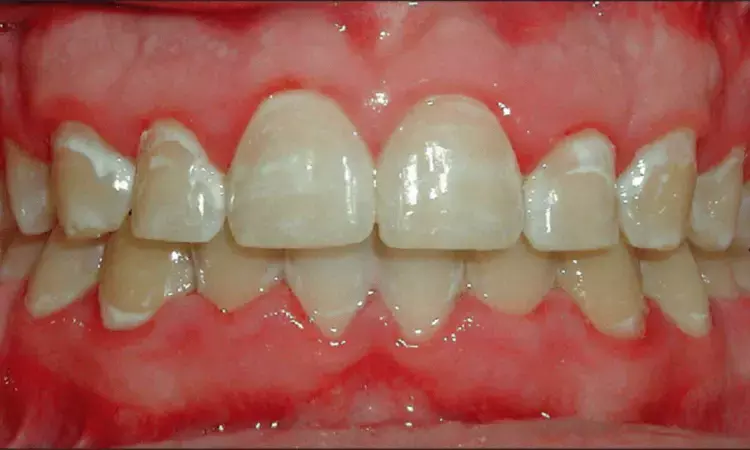- Home
- Medical news & Guidelines
- Anesthesiology
- Cardiology and CTVS
- Critical Care
- Dentistry
- Dermatology
- Diabetes and Endocrinology
- ENT
- Gastroenterology
- Medicine
- Nephrology
- Neurology
- Obstretics-Gynaecology
- Oncology
- Ophthalmology
- Orthopaedics
- Pediatrics-Neonatology
- Psychiatry
- Pulmonology
- Radiology
- Surgery
- Urology
- Laboratory Medicine
- Diet
- Nursing
- Paramedical
- Physiotherapy
- Health news
- Fact Check
- Bone Health Fact Check
- Brain Health Fact Check
- Cancer Related Fact Check
- Child Care Fact Check
- Dental and oral health fact check
- Diabetes and metabolic health fact check
- Diet and Nutrition Fact Check
- Eye and ENT Care Fact Check
- Fitness fact check
- Gut health fact check
- Heart health fact check
- Kidney health fact check
- Medical education fact check
- Men's health fact check
- Respiratory fact check
- Skin and hair care fact check
- Vaccine and Immunization fact check
- Women's health fact check
- AYUSH
- State News
- Andaman and Nicobar Islands
- Andhra Pradesh
- Arunachal Pradesh
- Assam
- Bihar
- Chandigarh
- Chattisgarh
- Dadra and Nagar Haveli
- Daman and Diu
- Delhi
- Goa
- Gujarat
- Haryana
- Himachal Pradesh
- Jammu & Kashmir
- Jharkhand
- Karnataka
- Kerala
- Ladakh
- Lakshadweep
- Madhya Pradesh
- Maharashtra
- Manipur
- Meghalaya
- Mizoram
- Nagaland
- Odisha
- Puducherry
- Punjab
- Rajasthan
- Sikkim
- Tamil Nadu
- Telangana
- Tripura
- Uttar Pradesh
- Uttrakhand
- West Bengal
- Medical Education
- Industry
Bioactive glass remineralization therapy may reduce Post-orthodontic White Spot Lesions

Bioactive glass remineralization therapy may reduce Post-orthodontic White Spot Lesions suggests a new study published in the to evaluate the efficacy of 2 types of bioactive glass (45S5) compared to casein-phosphopeptide stabilized-amorphous calcium phosphate (CPP-ACP) in the treatment of orthodontically-induced white spot lesions (WSLs).
Sixty post-orthodontic WSLs (ICDAS II score 2) were randomly allocated to a double blind randomized controlled trial with 3 parallel arms (n = 20). Test group I (Bio-BAG) received BiominF slurry and toothpaste, and test group II (N-BAG) received Novamin slurry and toothpaste. While the positive control group (CPP-ACP) received Recaldent paste. Products were applied daily in-office during week 1, and boosted by self-administered home application for 4 weeks (week 1-4). Standard oral hygiene care was performed by all participants twice daily during months 2-6. All patients were assessed for change in WSL dimensions using computer assisted analysis based on standardized digital intraoral photographs in addition to laser fluorescence DIAGNOdent assessment before treatment (T0) and at 1 week (T1), 1 month (T2), 3 months (T3,) and 6 months (T4) follow up periods.
Results:
• Kruskal Wallis test was used (P < .05 for all). At T4, a statistically significant (P < .001) regression of WSL was disclosed in all 3 groups compared to baseline, and a highly significant lesion size percent reduction in Bio-BAG group compared to the control group (P < .001).
• The mean area of the lesions decreased by 64.8%, 32.2%, and 31.6% for groups I, II and III respectively (P = .001).
• DIAGNOdent findings largely reflected the clinical scores
• No adverse effects were reported.
The combined in-office and home-application of BiominF paste for 4 weeks resulted in greater esthetic improvements of post-orthodontic WSLs compared to Novamin and CPP-ACP. In addition, BiominF showed a significant reduction in fluorescence intensity which indicates potential lesion remineralization.
Reference:
EFFICACY OF NOVEL BIOACTIVE GLASS IN THE TREATMENT OF ENAMEL WHITE SPOT LESIONS: A RANDOMIZED CONTROLLED TRIAL✰ J Evid Based Dent Pract 2022 Dec 01;22(4)101725, R Salah, RR Afifi, HA Kehela, NM Aly, M Rashwan, RG Hill
Dr. Shravani Dali has completed her BDS from Pravara institute of medical sciences, loni. Following which she extensively worked in the healthcare sector for 2+ years. She has been actively involved in writing blogs in field of health and wellness. Currently she is pursuing her Masters of public health-health administration from Tata institute of social sciences. She can be contacted at editorial@medicaldialogues.in.
Dr Kamal Kant Kohli-MBBS, DTCD- a chest specialist with more than 30 years of practice and a flair for writing clinical articles, Dr Kamal Kant Kohli joined Medical Dialogues as a Chief Editor of Medical News. Besides writing articles, as an editor, he proofreads and verifies all the medical content published on Medical Dialogues including those coming from journals, studies,medical conferences,guidelines etc. Email: drkohli@medicaldialogues.in. Contact no. 011-43720751


